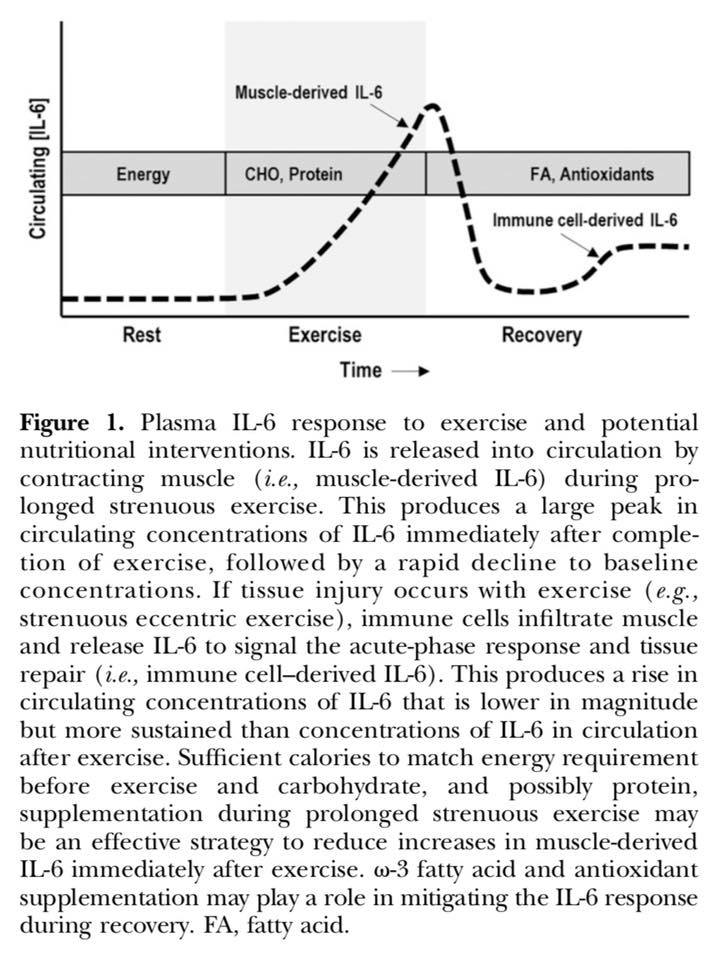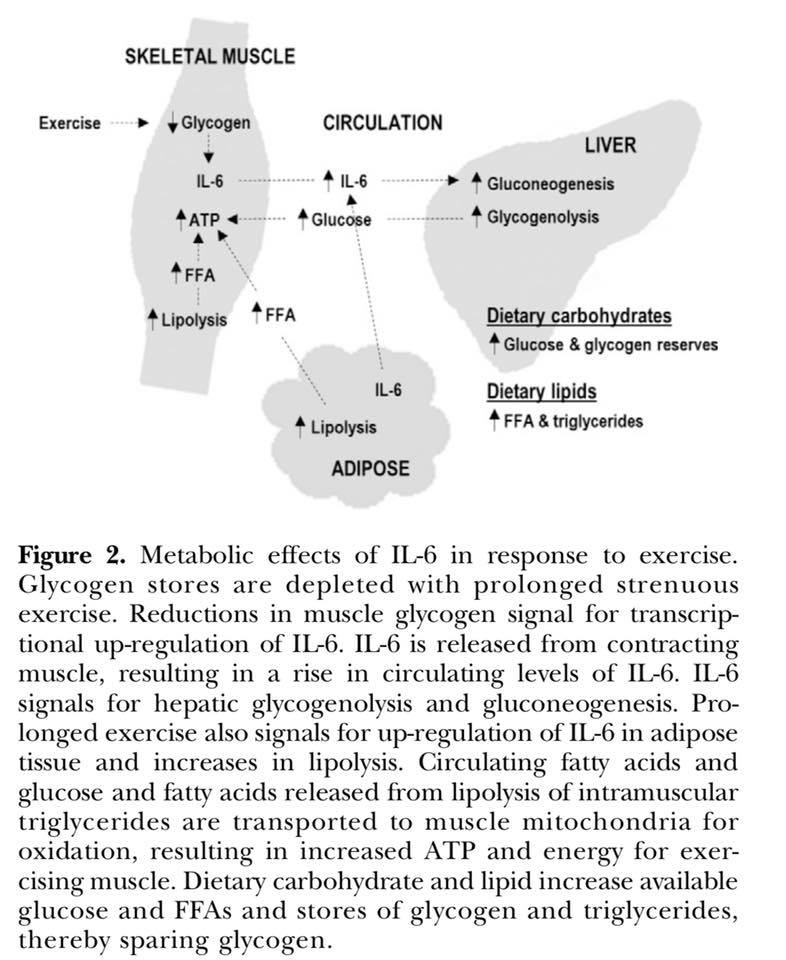Stress hormone IL-6 and chronic malnutrition
Are you struggling with low Iron?
There is a fair chance that you eat a healthy balanced diet with with adequate iron levels, but your body just won’t absorb it. The below scientific review describes the way that the muscle derived stress hormone Interleukin 6 (Il-6) blocks the uptake of Iron in the gut and can lead to low serum Iron levels.
Energy balance and muscle glycogen levels can dramatically influence Il-6 levels and this stress response may lead to a chronic malabsorption of Iron and other nutrients from the foods you eat.
Correctly timing meals around training and rapidly restoring muscle glycogen after a training session is the best place to start when reversing chronic stress induced malnutrition.
Within the first 20 minute window after a training session you must consume at least 1g of simple sugars per Kg of body weight and 20g of protein to maximise energy uptake into the muscle and halt the damaging stress response.
Consuming 40g- 60g of carbohydrate drink every hour during exercise has also shown to reduce the depletion of muscle glycogen and reduce the Il-6 response during exercise.
If you have low iron levels talk to your sports doctor to have your baseline iron levels tested and begin the above nutritional interventions. Follow up with a second test 1 month later to observe the changes in your body.
Champion athletes are created from the small decisions they make each day.
Stay healthy and train smart.
——
Nutritional interventions and the IL-6 response to exercise
https://www.fasebj.org/doi/pdf/10.1096/fj.201700080R
“Another potential consequence of sustained elevations in IL-6 is a decline in nutrient absorption, particularly nutritionally essential minerals such as iron and zinc. Circulating levels of iron and zinc increase immediately after exercise and decline with recovery. Inflammation, particularly the release of IL-6, is known to contribute to the decline of iron and zinc (termed the hypoferremia and hypozincemia of inflammation).”
“The mechanism for the hypoferremia of inflammation is well established and involves IL-6-induced increases in the hormone Hepcidin.” (Hepcidin causes iron levels to fall due to decreased iron transport in the gut and the trapping of iron in cells.)
“Sparing muscle glycogen and maximizing recovery are essential for optimal performance during exercise and in conferring the adaptive benefits of repeated exercise bouts with recovery (i.e., training). Because IL-6 is thought to respond to the energy available to the exercising muscle, various nutritional interventions have been studied with the goal of sparing energy stores and mitigating increases in muscle-derived IL-6. In addition, nutritional interventions have sought to reduce muscle damage and the resulting IL-6 associated with tissue injury to maximize recovery and the adaptive response to exercise.”
“Nehlsen-Cannarella et al. demonstrated an attenuation in the exercise induced increase in plasma IL-6 in marathoners consuming a carbohydrate beverage compared to those consuming a placebo beverage after a 2.5-h run at 75 to 80% maximum oxygen consumption (VO2max). A similar degree of attenuation was observed in cyclists that cycled for 2.5 h at 60% maximum work rate (Wmax; 75% VO2max)”
“Consistent with these findings, Nieman et al. reported reductions in plasma IL-6 in triathletes who consumed a carbohydrate compared to a placebo beverage, regardless of whether the participants ran (55% reduction) or cycled (35% reduction) for 2.5 h at 75% VO2max. The lowest IL-6 concentration observed after exercise was in participants consuming the carbohydrate beverage and cycling, whereas the highest IL-6 concentrations occurred in the participants consuming the placebo beverage and running.”

